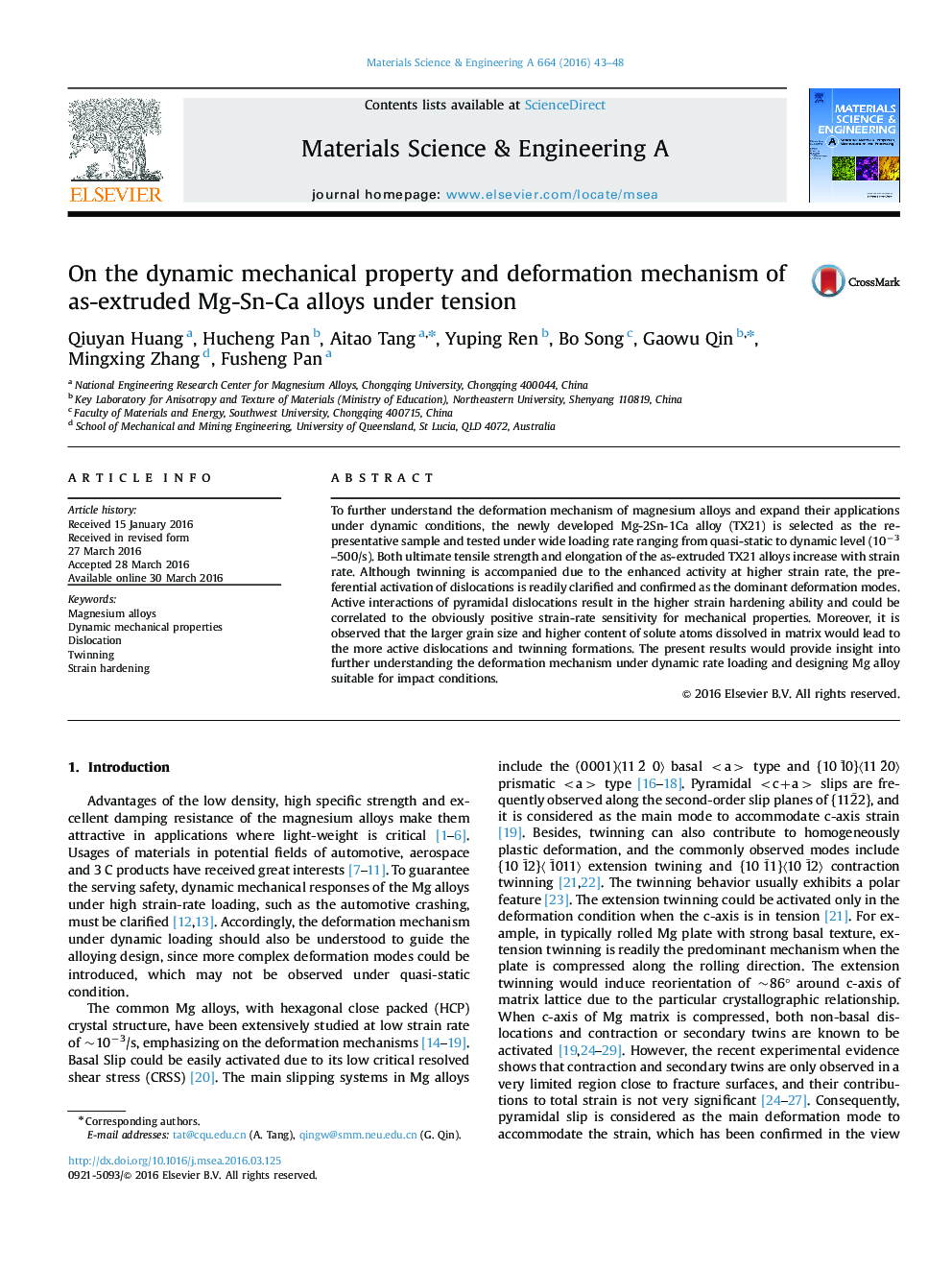| Article ID | Journal | Published Year | Pages | File Type |
|---|---|---|---|---|
| 1573403 | Materials Science and Engineering: A | 2016 | 6 Pages |
Abstract
To further understand the deformation mechanism of magnesium alloys and expand their applications under dynamic conditions, the newly developed Mg-2Sn-1Ca alloy (TX21) is selected as the representative sample and tested under wide loading rate ranging from quasi-static to dynamic level (10â3-500/s). Both ultimate tensile strength and elongation of the as-extruded TX21 alloys increase with strain rate. Although twinning is accompanied due to the enhanced activity at higher strain rate, the preferential activation of dislocations is readily clarified and confirmed as the dominant deformation modes. Active interactions of pyramidal dislocations result in the higher strain hardening ability and could be correlated to the obviously positive strain-rate sensitivity for mechanical properties. Moreover, it is observed that the larger grain size and higher content of solute atoms dissolved in matrix would lead to the more active dislocations and twinning formations. The present results would provide insight into further understanding the deformation mechanism under dynamic rate loading and designing Mg alloy suitable for impact conditions.
Related Topics
Physical Sciences and Engineering
Materials Science
Materials Science (General)
Authors
Qiuyan Huang, Hucheng Pan, Aitao Tang, Yuping Ren, Bo Song, Gaowu Qin, Mingxing Zhang, Fusheng Pan,
